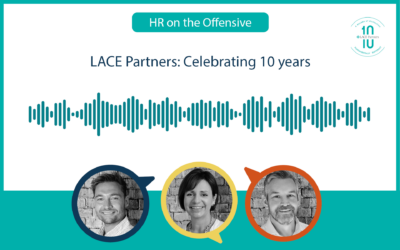Rachel Mawson, Practice Lead from LACE Partners gives us an overview of Digital Adoption Solutions (DAS) and why you should be clueing yourself up on them now.
What is adoption?
At LACE, when we talk about ‘adoption’, we mean a measurable state of behaviour that is reached during or after a period of change. That’s why we prefer to focus on ‘adoption’ rather than ‘change management’ as it is more focused on achieving a specific outcome; an achievement of longer term behaviour change. In a business context, this might mean new ways of working have been adopted as a result of a new HR operating model – HR team A is now responsible for X and are actively doing X every day. Or a new HR technology is embedded into the everyday workings of a business – business A is now using technology X to complete their time sheets and expenses.
So what is digital adoption and why is it important?
One of the clearest answers to this comes from Lilach Bullock, a contributor at Forbes.com:
“Digital adoption, quite simply, refers to achieving a state within your company where all of your digital tools and assets are leveraged to the fullest extent.”
More info from that article here.
We regularly hear about the fallout from failed technology implementations.
Exhibit A: Failed SAP implementation costs LeasePlan €100 million
So it should be a high priority for businesses:
- Actually achieve what they say they will when it comes to tech and
- Act in a sustainable way to ensure that, when it comes to their digital workplace, users of the tech are given the best chance of success.
There will be many reasons why a company might not realise the level of digital adoption they expect to or assume in their business case, but that is a topic for an entirely different blog!
What is a digital adoption solution and how can it help?
Functionally, digital adoption solutions can sit across multiple applications in the digital workplace and assist users with completing business processes by providing point of need training or support materials and information related to the task they are trying to complete. This is particularly helpful for new users, more complex processes and tasks that are only performed infrequently. . (see the Gartner article I mentioned in a previous blog about increasing sales productivity with digital adoption solutions).
But perhaps even more importantly, digital adoption solutions allow you to tangibly measure, and analyse, user behaviour across platforms including the consumption of help content, to help you to understand where adoption are not where they need to be. By understanding this behaviour you can then begin to work out what isn’t working and why, then intervene as needed to address the adoption challenges.
A digital adoption solution will significantly contribute to your digital transformation success. Specifically, it will give you the capability to provide sustainable user support and create insight driven action plans to drive digital adoption.
We have all experienced the scenario where we are sold technology on the basis that it is ‘easy to use’. And yes, a lot of the time, a basic product is easy to use, particularly in terms of navigation and field completion. But begin to add the configuration elements your company believes you need because you are a ‘unique case’, couple that with policies and end to end processes (of which only some steps are completed using the tech) that are infrequently used or even misunderstood, and your simple intuitive technology becomes confusing and time consuming to navigate and make sense of. To make matters worse, 70% of new information is lost within a day so any training provided before launching a system can generate only a limited return.
If you are in the world of HR transformation consider this scenario: You want your employees to use a new HR platform to complete their performance objectives (worst case once a year). For the initial roll out of the platform, you have issued a number of communications, maybe even some training, on this topic as well as how to use the system in general. A year later, employees need to complete the same objective setting process on the system but who can remember what to do? An in-system help guide on the topic or process walk-through might be just what an employee needs to remind themselves rather than a potentially out of date training document sitting in your email or on the intranet.
How do you prepare to invest in a DAP?
If you are on board with investing in a digital adoption solution, here are six the practical things you should think about ahead of time:
- How are you measuring Adoption? What outcomes are you trying to drive: return on investment, user experience, process completion? Be really clear on what you want to achieve and agree a set of metrics to track impact.
- If you already have an established digital workplace, what does the ‘plumbing’ look like? For example, do you have a consistent browser landscape (Google Chrome, Edge, IE)? Do you have single-sign-on? These aren’t ‘must haves’ for some of the DAP options but can make the implementation easier. And the implementation of a digital adoption solution could be a great time to take stock and use it as an opportunity to make wider changes that will support your future technical landscape.
- In global organisations, despite English potentially being the ‘business language’, people’s acceptance of technology in the workplace and ability to truly understand how to correctly complete a task is significantly increased when you cater to language preferences as well as thinking about the overall user experience. So plan for providing content in the languages relevant to your business.
- Digital adoption solutions don’t necessarily replace training, but they shouldn’t be implemented in isolation from an organisation’s wider learning strategy, whether that is eLearning-based or not. In the same way, DAS also don’t replace knowledge bases/content libraries but can be complementary to them – just remember there should be one single source of truth.
- During an implementation of a digital adoption solution, for the most part everyone involved is aware of who is doing what especially in relation to content authoring, content architecture and set up. But once implemented, who will be responsible for: a) ongoing maintenance of the digital adoption solution as a platform, and b) creating new and amending existing ‘help’ content, process walk-throughs and communications accessed via the platform. Think longer term – where does ownership sit? What support model do you need?
- Last but by no means least – have you thought about mobile usage? Does the implementation for a digital adoption solution support users mobile experience? Should it?
If you would like to talk to Rachel or any of the team at LACE about your DAS journey your business is on, then reach out to us on +44 (0) 20 8065 0310 or email us at info@lacepartners.co.uk.
Further reading
HR tech adoption – it’s not just ‘plug and play’






